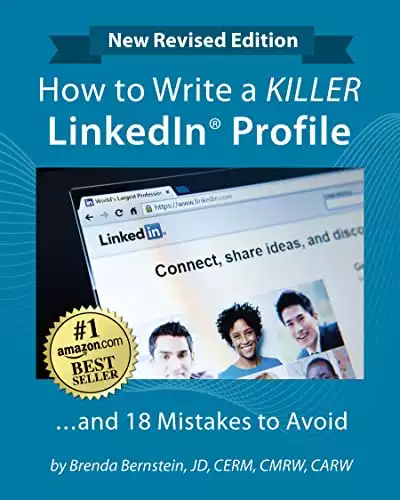We may receive compensation when you click on links to products from our partners.
LinkedIn is the corporate counterpart to Facebook, attracting professionals from all walks of life. This popularity presents a significant challenge—standing out from the crowd. With everyone maintaining a LinkedIn profile, one must take deliberate steps to ensure their account doesn’t become lost in the multitude.
LinkedIn Optimization
- Optimize Your Headline: Use the 120-character limit to create a concise and compelling headline that reflects your skills and aspirations.
- Use a Professional Photo: Opt for a high-quality, professional-looking profile picture to make a strong first impression.
- Customize Your URL: Customize your LinkedIn profile URL to make it easy for others to find you.
- Highlight Skills and Endorsements: Showcase your top skills and seek endorsements from colleagues and connections.
- Write a Compelling Summary: The summary is your chance to tell your story, highlight your achievements, and share your career goals.
- Detail Your Experience: Provide an informative overview of your past roles, responsibilities, and accomplishments.
- Include Relevant Keywords: Use industry-relevant keywords in your profile to increase visibility in search results.
- Request Recommendations: Request written recommendations from colleagues, managers, or clients to add credibility to your profile.
- Stay Active: Regularly share updates, publish articles, and engage with
your network ‘s posts to stay visible and active. - Job Search Settings: Utilize LinkedIn’s
job search settings to indicate your availability to recruiters and specify the types of roles you’re interested in.
As the premier platform for professional networking, LinkedIn serves as a hub for both recruiters and job seekers to post job openings and explore career opportunities. Acting as a global repository of digital resumes, CVs, and profiles, its value to members is immeasurable, and employers recognize its significance. A few swift clicks can reveal your entire work history, certifications, awards, business associations, and even personal photographs to potential employers. Though its comprehensive and convenient nature may seem daunting, fear not. By mastering a few straightforward steps, you can take control of your profile, potentially attracting more job offers than you ever imagined.
LinkedIn is the Facebook of the corporate universe and anyone who is anyone has an account. Therein lays one of its biggest challenges – everyone has a LinkedIn profile and if you're not careful, your account will be just another one in the crowd.Click To Tweet1. Head’s Up:
Focus initially on your headline—it needs to be impactful but not overwhelming. Utilize a handful of precise words to showcase your skills and professional interests. Avoid cramming a lifetime’s worth of experiences into this section as it may appear cluttered and disorganized. With a limit of 120 characters, it’s crucial to use this space judiciously to spotlight your expertise.
2. Educate With Your Education:
There’s no need to mention achievements that aren’t relevant to your current profession—like acing a third-grade art class. This section of your profile should remain up-to-date and directly related to your areas of expertise and professional identity. It should encompass your high school and
3. Work It:
Similar to your educational background, your employment history is crucial information for LinkedIn users. Utilize this section to succinctly outline your career journey and progression. Remember, relevance is key. A dull, verbose list of every job you’ve held over the past decade won’t captivate or impress anyone. People are interested in your significant contributions and the professional growth you’ve achieved over time. That’s the story your profile should tell.
4. If You Like Me, Tell Everyone:
LinkedIn features a valuable recommendations section, and it’s beneficial to encourage your colleagues to utilize it fully. If you’ve been on the platform for several years and your only testimonial dates back to the inception of your account, it may be time to rejuvenate this section. People value and consider these recommendations seriously. Thus, they should be as recent as possible—potential employers won’t be swayed by ancient praise for a singular accomplishment from years ago.
5. Activate Your Activity:
If you’re not actively networking on the site, your profile risks becoming stagnant and disappearing into the multitude of inactive accounts. While it might sound overly dramatic, it’s accurate! You can maintain an active presence by posting updates, refreshing your photos, participating in or initiating groups, and engaging in discussions. This activity signals to
Summary
In conclusion, LinkedIn is a powerhouse platform for professional growth and job success. By mastering these five key steps—optimizing your headline, showcasing your skills, detailing your education and work experience, gathering recommendations, and maintaining an active presence—you can unlock LinkedIn’s full potential. Don’t let your profile become another face in the crowd. Stand out, showcase your accomplishments, and leverage this platform to propel your career forward. With LinkedIn as your ally, job success is within your reach.
If you happen to be unemployed, one of the top 3 most important things you can do is maximize your value on LinkedIn (writing a standout resume and networking are the other two).




